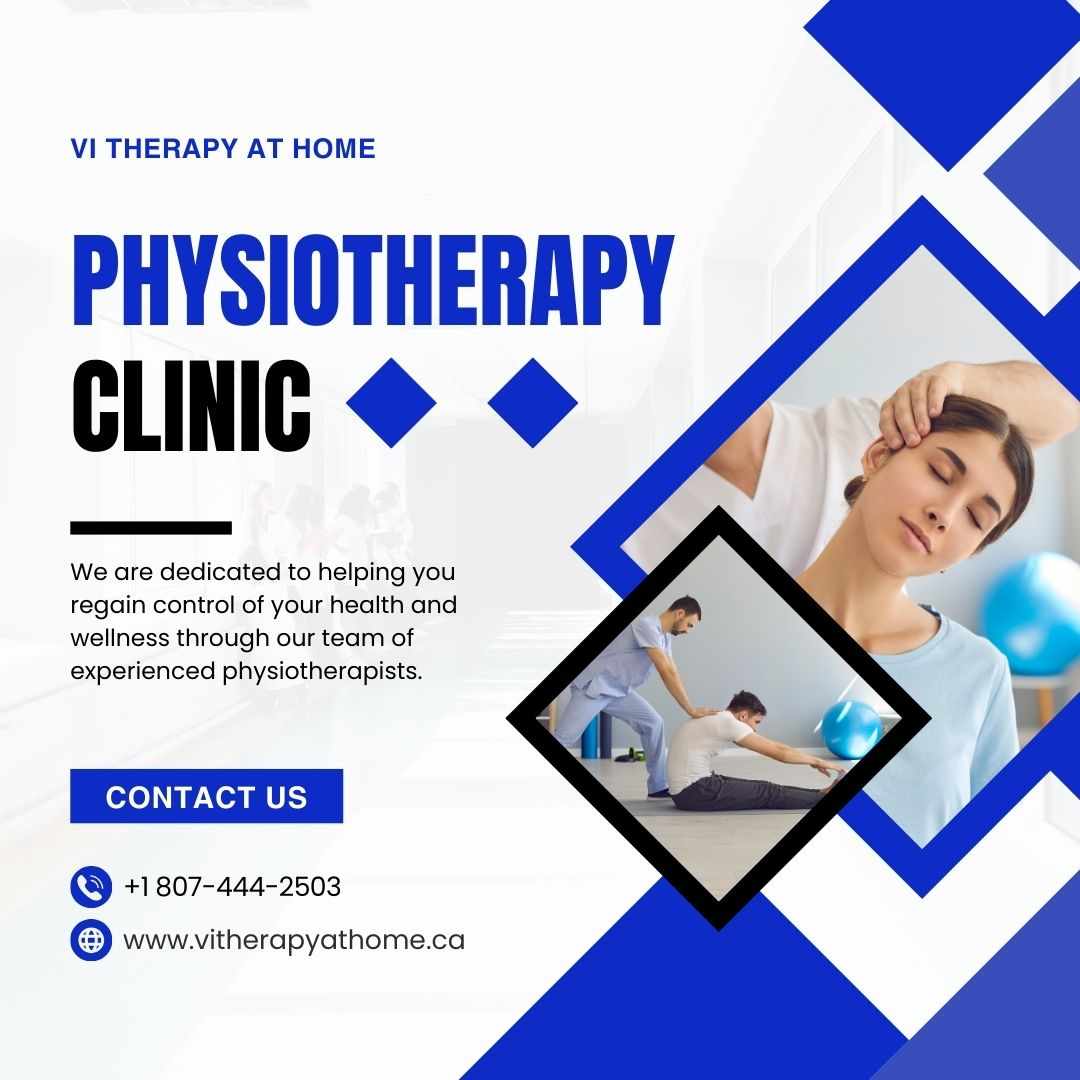
Vertigo is a condition that causes an illusion of spinning or dizziness, which can lead to significant discomfort and disrupt daily life. Often a result of issues within the inner ear or the brain, vertigo may impact one’s balance, leading to a risk of falls and injury. For individuals experiencing vertigo, physiotherapy offers effective treatments that help restore balance, reduce symptoms, and promote recovery.
This article provides an overview of how vertigo physiotherapy can help individuals regain their sense of balance, discusses common exercises and therapies involved, and explores the causes and impact of vertigo.
Understanding Vertigo and Its Causes
Vertigo is commonly linked to issues within the vestibular system, a complex system in the inner ear that regulates balance and spatial orientation. When this system is disrupted, it can send inaccurate information to the brain about body positioning, leading to a sensation of spinning or dizziness. There are several causes of vertigo, including:
Benign Paroxysmal Positional Vertigo (BPPV): This is one of the most common forms of vertigo and occurs when tiny calcium particles (canaliths) accumulate in the inner ear canals, disrupting balance signals.
Meniere’s Disease: An inner ear disorder that causes vertigo, hearing loss, and a feeling of fullness or pressure in the ear.
Vestibular Neuritis or Labyrinthitis: These are infections that cause inflammation in the inner ear or the vestibular nerve, leading to vertigo and imbalance.
Head Injuries: Trauma to the head can cause damage to the inner ear structures, resulting in vertigo.
Migraines: Vestibular migraines are a type of migraine that can cause episodes of vertigo along with traditional migraine symptoms.
For those with vertigo, physiotherapy focuses on restoring balance and spatial orientation by retraining the vestibular system to work efficiently.
The Role of Physiotherapy in Treating Vertigo
Physiotherapy for vertigo involves various therapeutic exercises and movements designed to reduce dizziness and improve stability. A specialized treatment approach, known as Vestibular Rehabilitation Therapy (VRT), is commonly employed to address vertigo. VRT includes exercises that focus on the following:
Balance Training: Balance exercises help the body adapt to balance changes and improve stability.
Gaze Stabilization: These exercises train the eyes to remain steady even when the head is moving.
Head Movement Exercises: These involve controlled head movements to help the brain become accustomed to changes in head position.
Postural Training: By working on posture, these exercises aim to improve body awareness and prevent falls.
Canalith Repositioning Maneuvers: For those with BPPV, specific maneuvers help to move misplaced calcium particles out of the inner ear canals, relieving symptoms.
Vestibular Rehabilitation Therapy (VRT)
Vestibular Rehabilitation Therapy is a core component of vertigo treatment and aims to retrain the brain to process information from the inner ear and eyes effectively. It’s an evidence-based approach with proven benefits for patients suffering from vestibular disorders, such as vertigo.
Canalith Repositioning Maneuvers
For patients with BPPV, maneuvers such as the Epley Maneuver or the Semont Maneuver are used to shift calcium crystals from the sensitive areas of the inner ear back to where they don’t trigger vertigo symptoms. Each of these maneuvers involves specific head and body positions to move the canaliths back to the correct part of the ear.
Balance and Gaze Stabilization Exercises
Balance and gaze stabilization exercises are essential in VRT and are intended to improve the body’s response to head movements, balance, and visual tracking.
For example:
Balance Exercises: Patients may perform exercises like standing on one leg, walking heel-to-toe, or practicing balance on unstable surfaces. These exercises help the brain improve stability and reduce feelings of dizziness.
Gaze Stabilization Exercises: Patients focus on a stationary object while moving their head side to side. This exercise helps train the eyes and brain to coordinate and keep visual focus steady.
Habituation Exercises
These exercises help reduce sensitivity to movements that may trigger dizziness. By gradually exposing the body to such movements, the brain learns to adapt, reducing dizziness over time.
Benefits of Vertigo Physiotherapy
Symptom Reduction: Regular physiotherapy sessions can reduce the severity and frequency of vertigo symptoms.
Improved Balance and Stability: By retraining the vestibular system, patients can achieve better balance and reduce the risk of falls.
Increased Independence: Physiotherapy allows patients to manage their symptoms, helping them regain confidence and independence in their daily activities.
Enhanced Quality of Life: Addressing vertigo symptoms improves overall well-being and enables individuals to perform their daily activities without fear of dizziness or falls.
Home Exercises for Vertigo Relief
In addition to supervised therapy sessions, individuals with vertigo may benefit from performing specific exercises at home. A few of these exercises include:
Brandt-Daroff Exercises
These involve sitting upright on a bed and then moving to a lying-down position on one side, with the head at a 45-degree angle. This helps to reduce dizziness in patients with BPPV.Standing Balance Exercises
Simply standing on one foot, or walking in a straight line heel-to-toe, can improve balance and confidence.Seated Gaze Stabilization Exercise
While seated, focus on a fixed point while moving the head from side to side or up and down. This can help train the vestibular system to manage head movements more efficiently.
It’s essential to consult a physiotherapist before performing any home exercises, as improper technique or exercises not suited to an individual’s condition may worsen symptoms.
Seeking Professional Help: When to Consider Physiotherapy for Vertigo
Vertigo can significantly impact daily life, and it’s essential to seek medical advice if symptoms are recurring or disruptive. Physiotherapy is beneficial for those who:
Experience frequent dizziness or imbalance
Have been diagnosed with vestibular disorders like BPPV or Meniere’s disease
Suffer from dizziness following a head injury
Find it difficult to perform daily activities due to symptoms of vertigo
A physiotherapist will assess the condition and design a customized treatment plan based on the cause and severity of vertigo. They may also work alongside other medical professionals, such as an otolaryngologist (ear, nose, and throat specialist), to ensure comprehensive care.
Choosing a Physiotherapy Clinic for Vertigo Treatment
When selecting a clinic, consider:
Experience with Vestibular Disorders: Ensure the clinic specializes in vestibular disorders and has qualified physiotherapists trained in VRT.
Patient Reviews and Recommendations: Testimonials from other patients can provide insights into the quality of care and effectiveness of treatment.
Treatment Customization: Look for clinics that personalize treatment plans based on the individual’s unique needs and condition severity.
Facilities and Equipment: A well-equipped clinic with access to specialized tools can enhance the effectiveness of treatment.
Conclusion
Vertigo physiotherapy offers effective, evidence-based treatments to address the root causes of vertigo, reduce symptoms, and enhance balance. Through specialized exercises and therapies, individuals can regain their independence and confidence, leading a more active and stable life. Working with a skilled physiotherapist can make a substantial difference in managing vertigo, empowering individuals to overcome dizziness and instability for a better quality of life.
Vi Therapy At Home offers expert physiotherapy services for individuals experiencing vertigo in Thunder Bay. Our dedicated team is committed to helping you regain balance and improve your quality of life.









Write a comment ...